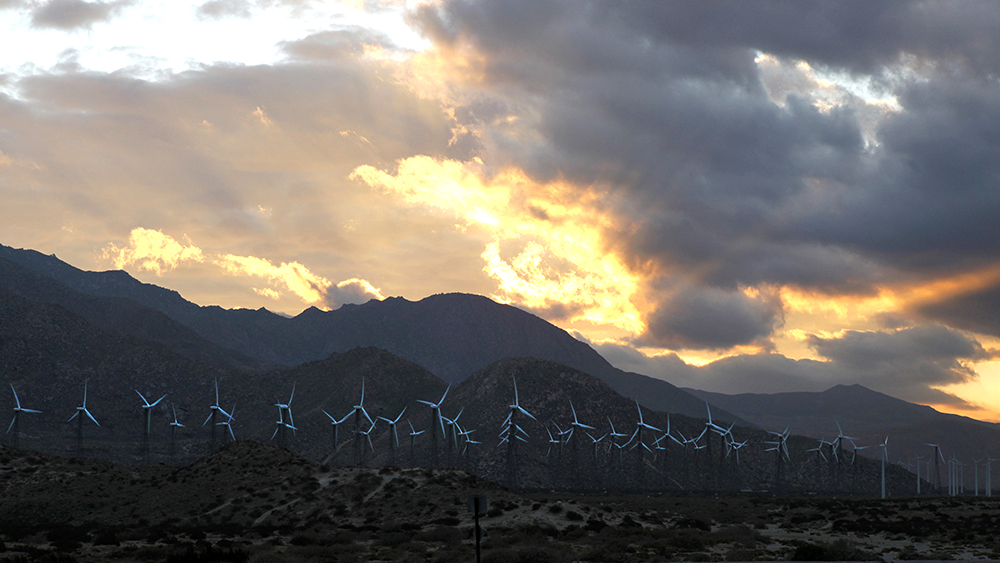The Trump administration represents an enormous setback in the fight against climate change. Even so, there is room for constructive policy at the state level.
President Donald Trump’s approach to US climate and energy policy represents a stark departure from his predecessors. While the details of implementation remain uncertain, his actions indicate that at least five major changes are underway in Washington in the energy and climate realm.
First, Trump is fulfilling his campaign promise to roll back regulations across the federal government by requiring executive departments and agencies to cut two regulations for every new one proposed. Second, he promised to “lift the restrictions on the production of American energy” and revive the US coal industry (although substantial job growth is unlikely even if production increases), remove moratoriums on energy production on US federal lands, and undo policies that restrict new drilling technologies. Third, the President’s Fiscal Year 2018 Budget Request would slash a quarter of the Environmental Protection Agency’s (EPA) budget—a proposal underscored by the selection of Scott Pruitt, a noted climate change denier, to head the EPA. Fourth, on March 28, Trump signed the “Energy Independence” Executive Order calling on Pruitt to dismantle the Obama-era Clean Power Plan (CPP), which addresses a significant part of the emissions reductions commitments promised by the US nationally determined contribution (NDC) under the Paris Agreement. Finally, Trump has pledged to “cancel the Paris Climate Agreement and stop all payments of US tax dollars to UN global warming programs.” Although Trump’s administration has not (yet) abandoned the Paris Agreement, his team will limit the US leadership role and end funding for the UN Green Climate Fund.
These changes have implications for European and US policy-makers, and suggest that countries looking to the US for climate leadership, funding, policy, and action, should not look to the federal government, but to states, cities, and other sub-national actors.
Federal Policy Under Fire
Domestically, the outlook for federal climate policy under Trump is grim. The president has tasked Pruitt to essentially “redo” the CPP, something possible only because it is an executive-issued rule rather than a law passed by Congress. The Trump Administration’s “skinny budget” request would also eliminate funding for the CPP, along with climate-related funding across the US government. While the actual budget usually differs from the president’s request, it is clear that US climate funding will be dramatically reduced, if not eliminated entirely.
Moreover, any final rule promulgated by the Trump Administration to replace the CPP will almost certainly be challenged in court, further delaying federal climate action. The uncertainty created by this situation impedes planning, sends mixed messages to states, utilities, and grid operators about compliance, and delays critical transmission planning processes, which can take between five and ten years.
While there may be agreement within the Trump camp on halting the CPP and relaxing other federal requirements, such as the Corporate Average Fuel Economy (CAFE) standards, there is less agreement on how to handle international climate commitments. Two prominent members of Trump’s team – US Secretary of State and former ExxonMobil CEO Rex Tillerson and White House Chief Strategist and former executive of the right-wing Breitbart news network Steven Bannon – do not agree on US international climate engagement.
While Bannon has said little on climate change, Breitbart calls climate change believers “alarmists” and alleged that the Paris Agreement is against US interests and an attack on US sovereignty. Tillerson accepts the reality of climate change, but he believes there are far more pressing global priorities. When asked specifically about the Paris Agreement, Tillerson said, “I think it’s important that the United States maintain its seat at the table in the conversation on how to address threats of climate change.” These mixed messages have left foreign policymakers unsure which path the US intends to follow.
Should the US remain in the accord, Trump’s team could weaken the US pledge by revising its NDC – or simply ignore the accord, as compliance is largely voluntary. Another (potentially more) attractive option would be for the Trump Administration to assert that the Paris Agreement is a treaty requiring Senate ratification. This would put the onus on the Senate, absolving the administration of responsibility and undoubtedly signaling the end of US commitments under the accord.
At the end of the day, Tillerson might be the best hope for US participation in the Paris Agreement, although the amount of political capital he is willing to spend on climate change amid other major issues on his growing agenda remains to be seen. Trump’s daughter Ivanka and son-in-law Jared Kushner are reportedly strong advocates of the Paris Agreement – and some say helped keep the potential withdraw of the accord out of Trump’s “Energy Independence” Executive Order.
The Case for State Engagement
Although US federal policy is uncertain at best, transatlantic climate engagement is no less necessary under the Trump Administration, even if meaningful dialogue is more likely to occur outside Washington. At the state level, a diverse array of policy frameworks and resource profiles provide fifty opportunities for dialogue and engagement, revealing shared visions and challenges that are not encompassed in national US policy. For example, how are traditionally coal-dependent states planning for an energy transition? How are states with less expertise and resources moving forward, and how will their decisions affect a broader transition? These conversations must continue despite the shadow cast by Trump.
Three states illustrate the diversity of sub-national policy frameworks that have formed in the absence of coherent federal policy. California provides leadership that the nation’s capital is unlikely to demonstrate, setting ambitious climate goals while maintaining its standing as the sixth largest economy in the world. Texas presents an example of how the economics of the energy transition can trump political allegiances. New Mexico reveals that even in a location with abundant renewable resources, the obstacles in a transition away from coal can be difficult to overcome.
California: Climate Pioneer
California has long been a pioneer in setting and implementing a strong vision for combating climate change. California’s key legislation – including the Global Warming Solutions Act (A.B. 32) and the Pavley Clean Car Standards (A.B. 1492) – have set the state on a path to meet its near-term target to reduce GHG emissions to 1990 levels by 2020. Continuing this momentum, the California Legislature passed S.B. 32 (companion bill A.B. 197) in late 2016, which extends A.B. 32 and sets a new interim GHG target of 40 percent below 1990 levels by 2030. The newly established goal represents the most aggressive GHG target in North America and is based on key climate change strategy “pillars” including reducing petroleum use by half, generating half the state’s electricity from renewable resources, and doubling energy efficiency savings in existing buildings.
The cornerstone of the state’s ambitious strategy, the California Cap-and-Trade Program, is successfully linked with Québec’s Cap-and-Trade Program, and future linkage with Ontario is under consideration. The California Air Resources Board is working to amend the Cap-and-Trade regulation to extend major provisions of the program beyond 2020 and broaden the program through linkage with Ontario. Simultaneously, California is updating the A.B. 32 Climate Change Scoping Plan to outline the proposed statewide strategy for meeting its 2030 goals while ensuring sustained and cost-effective economic growth.
California understands that international and domestic partnerships are key to its long-term climate strategy. Following a signing ceremony at COP 22 in Marrakesh, Morocco, the Under 2 Coalition – formed in 2015 by the states of California and Baden-Württemberg – added 29 new supporters to the growing list of over 160 sub-national actors committed to the 2˚C target.
Texas: Renewable Friendly
While known for its oil and gas riches rather than renewable resource policies, Texas has emerged as a surprising wind energy leader. With over 20 GW of installed capacity, Texas has more wind resources than the next three US states combined. Many cities in Texas also see promise and potential investment opportunity in renewables expansion. Georgetown, a suburb north of the capital Austin, is one of the first US cities to rely completely on renewable energy, while Dallas, Austin, and San Antonio have pledged to follow suit.
Texas has a history of proactive policy measures to improve its electricity market and enable renewable integration. The Texas legislature passed S.B. 7 in 1999, deregulating the electricity market and establishing a renewable portfolio standard (RPS), later increased in 2005 by S.B. 20. S.B. 20 also established the Competitive Renewable Energy Zones (CREZ) initiative, which identified zones of remote renewable resource production and planned transmission capacity accordingly, resulting in over 3,500 miles of new transmission lines. CREZ enabled dramatic increases in wind production, allowing Texas to easily meet its RPS goals, and is an example of successful transmission planning to accommodate renewables that could be a useful model for Germany.
Texas still lags far behind in solar, however, boasting less than 300 MW in installed capacity despite high solar irradiation and solar’s potential to help meet peak demand on hot summer afternoons. While CREZ increased capacity for renewable transmission, the ability to export excess renewable power could be needed, particularly if Texas is to add more solar capacity. Indeed, the very characteristic that enabled Texas’s success in grid expansion for renewables – a stand-alone intra-state system managed by ERCOT – could impede regional progress and preclude the potential to leverage additional renewable resources to reduce emissions. This challenge could be a topic of shared discussion between state officials and German policymakers struggling with the issue of excess renewable capacity, limited transmission capacity, and the potential for more regional cooperation with neighbors.
New Mexico: Possibility Without a Plan
While rich in solar, wind, and even geothermal resources, New Mexico’s coal, oil, gas, and uranium reserves have served as the backbone of the state’s energy economy. Although the state has given its renewable energy resources a nod with a modest RPS (20 percent by 2020), its fossil fuel roots continue to inform its future. Coal-fired power dominates the state’s resource portfolio, even as the economics of those plants and neighboring mines reveal that that they are beyond economic hope. The state’s largest utility is focusing on natural gas rather than recognizing the much greater potential for renewable generation.
Much like in Texas, a fundamental question arises: how and why a state like New Mexico failed to seize its sizeable renewable solar energy potential, while a country like Germany has managed to become a leader in installed solar resources despite much lower resource potential? New Mexico does not lack the resources; rather, it lacks the leadership and an effective plan for the transition away from fossil fuels. Conversations with Germany about how to achieve greater acceptance and support for a broader scale energy transition would give New Mexico a new perspective into how best to move forward.
Ensuring a Just Energy Transition
A global energy transition will require fundamental changes in the way energy is used and produced, the impacts of which will be felt by all economic sectors, socio-economic groups, and regions. How policymakers address this transition and mitigate its negative socio-economic impacts will be the key to success or failure. In the states described above, there are both opportunities and challenges to achieving an energy transition, and lessons to be learned both for and from Germany.
If the new US administration proves unwilling to cooperate on climate change, German and US policy-makers should capitalize on potential partnerships with state and non-state actors to further climate action at the sub-national level. The global energy transition will not be defined by one single global story; rather, it will be defined by a variety of desires, policies, and ambitions.
Read more in the Berlin Policy Journal App – May/June 2017 issue.








